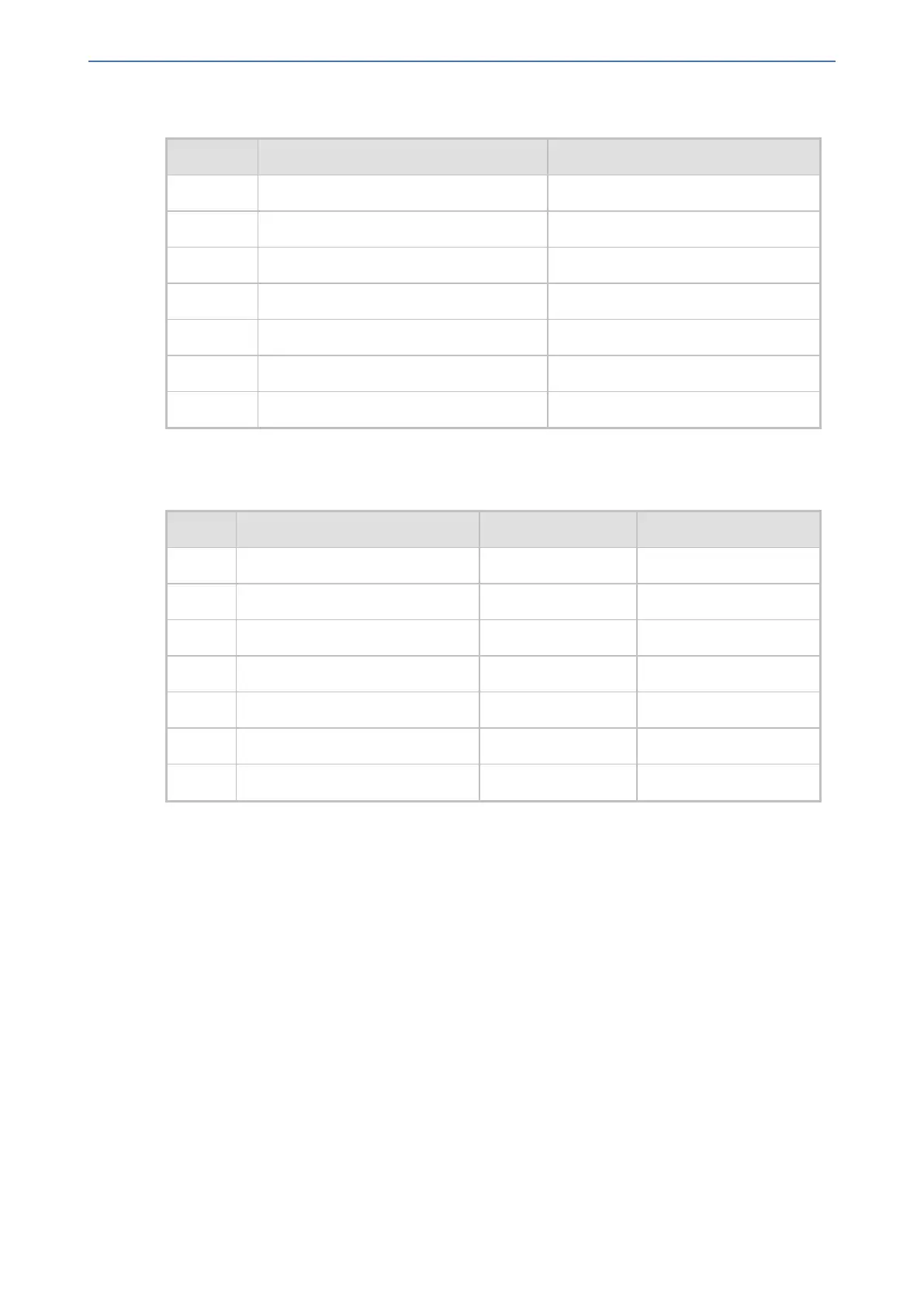CHAPTER16 Services
Mediant 1000 Gateway & E-SBC | User's Manual
Table 16-13:AD-Based Tel-to-IP Routing Rule Configuration Examples
Index Destination Phone Prefix Destination IP Address
1 PRIVATE: 10.33.45.60
2 PBX: 10.33.45.65
3 OCS: 10.33.45.68
4 MOBILE: 10.33.45.100
5 LDAP_ERR 10.33.45.80
6 * LDAP
7 * 10.33.45.72
The table below shows an example for configuring AD-based SBC routing rules in the IP-to-IP
Routing Table:
Table 16-14:AD-Based SBC IP-to-IP Routing Rule Configuration Examples
Index Destination Username Pattern Destination Type Destination Address
1 PRIVATE: Dest Address 10.33.45.60
2 PBX: Dest Address 10.33.45.65
3 OCS: Dest Address 10.33.45.68
4 MOBILE: Dest Address 10.33.45.100
5 LDAP_ERR Dest Address 10.33.45.80
6 * LDAP -
7 * Dest Address 10.33.45.72
The configured routing rule example is explained below:
■ Rule 1: Sends call to private telephone line (at 10.33.45.60) upon successful AD query result
for the private attribute.
■ Rule 2: Sends call to IP PBX (at 10.33.45.65) upon successful AD query result for the PBX
attribute.
■ Rule 3: Sends call to Skype for Business client (i.e., Mediation Server at 10.33.45.68) upon
successful AD query result for the Skype for Business attribute.
■ Rule 4: Sends call to user's mobile phone number (to PSTN through the device's IP address at
10.33.45.100) upon successful AD query result for the Mobile attribute.
■ Rule 5: Sends call to IP address of device (10.33.45.80) if AD query failure (e.g., no response
from LDAP server or attribute not found).
■ Rule 6: Sends query for original destination number of received call to the LDAP server.
■ Rule 7: Alternative routing rule that sends the call of original dialed number to IP destination
10.33.45.72. This rule is applied in any of the following cases
● LDAP functionality is disabled.
- 236 -

